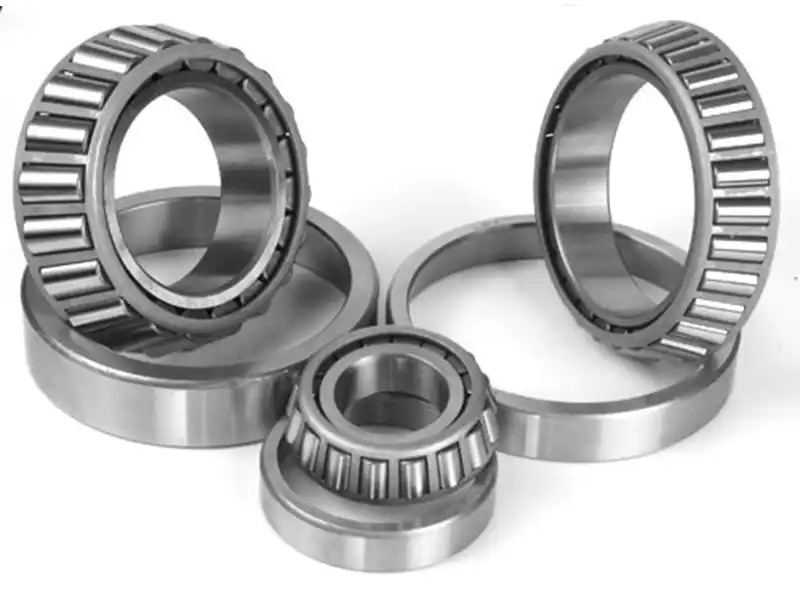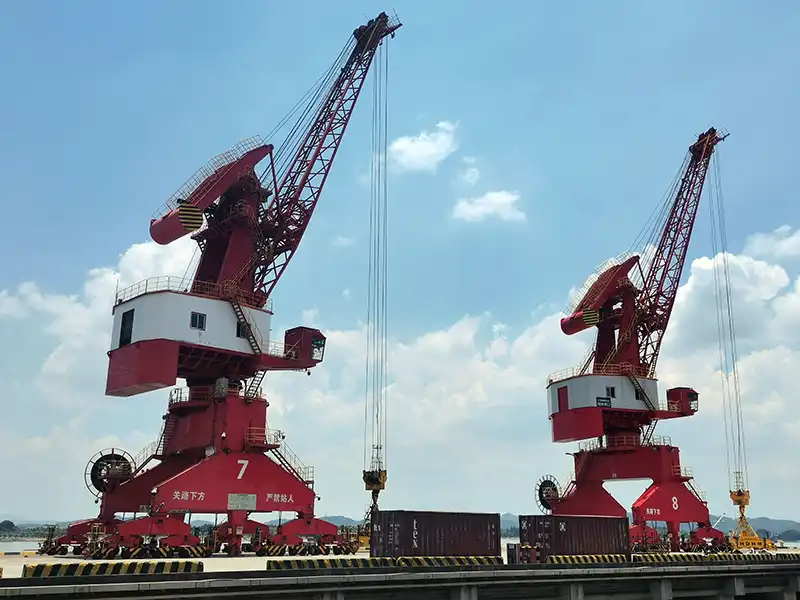How do High Speed Tapered Roller Bearings Perform in High-Load Conditions?
High-speed tapered roller bearings represent a critical technological innovation in mechanical engineering, serving as fundamental components that enable complex machinery to operate efficiently under demanding conditions. These specialized bearings are engineered to manage both radial and axial loads simultaneously, making them indispensable in numerous high-performance industrial applications. The intricate design of tapered roller bearings allows them to distribute loads across a wider surface area, resulting in enhanced durability, reduced friction, and superior operational reliability.

Can Tapered Roller Bearings Withstand Extreme Industrial Stress?
Tapered roller bearings are meticulously designed to handle extreme industrial stress through several sophisticated engineering principles. Their unique conical roller and cup configuration enables them to manage complex load distributions that traditional bearings cannot effectively address. The fundamental structural advantage lies in their ability to simultaneously support radial and axial loads, which is crucial in high-stress environments such as heavy machinery, automotive transmissions, and aerospace applications.
The load-bearing capacity of these bearings is primarily determined by their geometric design and material composition. Manufacturers utilize advanced metallurgical techniques to create rollers and races made from high-grade steel alloys that can withstand significant mechanical stress. The tapered geometry ensures that contact points between rollers and races are optimized to distribute loads more evenly, reducing localized stress concentrations that could potentially lead to premature bearing failure.
Modern high-speed tapered roller bearings incorporate advanced heat treatment processes that enhance their structural integrity. Through precise controlled heating and cooling cycles, these bearings develop superior microstructural characteristics that improve their resistance to mechanical wear, thermal expansion, and deformation. Specialized surface treatments like nitriding and carburizing further augment their performance by creating hardened outer layers that can withstand extreme operational conditions.
Research indicates that high-quality tapered roller bearings can maintain their structural integrity under load conditions exceeding 10,000 N (Newton) with minimal performance degradation. This extraordinary capability stems from their sophisticated design, which allows for multiple contact points between rollers and races. Unlike traditional ball bearings that rely on point contacts, tapered roller bearings distribute loads across larger surface areas, significantly reducing localized stress and enhancing overall mechanical resilience.
What Makes High-Speed Tapered Roller Bearings Essential in Modern Engineering?

The importance of high-speed tapered roller bearings in modern engineering cannot be overstated. These precision-engineered components serve as critical interfaces in complex mechanical systems, enabling technological advancements across multiple industries. Their versatility and performance characteristics make them indispensable in applications ranging from automotive powertrains to industrial machinery and aerospace technologies.
In automotive engineering, tapered roller bearings play a pivotal role in wheel hub assemblies, transmission systems, and differential mechanisms. Their ability to handle complex load conditions makes them ideal for managing the dynamic forces experienced during vehicle operation. Modern electric and hybrid vehicles particularly benefit from these bearings' low friction characteristics, which contribute to improved energy efficiency and extended operational range.
Aerospace applications represent another domain where high-speed tapered roller bearings demonstrate exceptional performance. Aircraft engines and landing gear systems require components that can operate reliably under extreme temperature variations and substantial mechanical loads. The bearings' capability to maintain dimensional stability and minimal performance deviation makes them critical for ensuring flight safety and operational reliability.
Industrial machinery represents a third significant domain where these bearings excel. From heavy manufacturing equipment to precision machining tools, tapered roller bearings provide the mechanical foundation that enables complex industrial processes. Their ability to maintain performance under continuous high-speed rotation and varying load conditions makes them essential for modern manufacturing technologies.
Advanced manufacturing techniques have further enhanced the capabilities of high-speed tapered roller bearings. Computer-aided design and precision manufacturing processes allow for increasingly sophisticated bearing geometries that can be tailored to specific industrial requirements. Nanotechnology and advanced material science continue to push the boundaries of bearing performance, enabling increasingly compact and efficient mechanical systems.
How Do Tapered Roller Bearings Optimize Performance Under Challenging Conditions?

Performance optimization in tapered roller bearings is achieved through a multifaceted approach that combines sophisticated design, advanced materials, and precision manufacturing. The inherent geometric configuration of these bearings allows for superior load distribution and reduced friction, two critical factors that determine overall mechanical efficiency.
Lubrication strategies play a crucial role in optimizing bearing performance under challenging conditions. Advanced lubricants with tailored molecular structures can significantly reduce friction and heat generation, thereby extending bearing life and maintaining consistent performance. Synthetic lubricants containing specialized additives can create protective molecular layers that minimize wear and provide enhanced thermal stability.
Computational modeling and simulation technologies have revolutionized the design and optimization of tapered roller bearings. Finite element analysis enables engineers to predict stress distributions, thermal behaviors, and potential failure modes with unprecedented accuracy. These digital tools allow for iterative design improvements that would be prohibitively expensive and time-consuming through traditional prototyping methods.
Predictive maintenance technologies have emerged as another critical strategy for optimizing tapered roller bearing performance. Integrated sensor systems can monitor critical parameters such as vibration, temperature, and rotational characteristics in real-time. Machine learning algorithms can analyze these datasets to predict potential bearing failures before they occur, enabling proactive maintenance interventions that minimize downtime and reduce overall operational costs.
The continuous evolution of material science contributes significantly to performance optimization. Emerging ceramic and composite materials offer superior hardness, thermal resistance, and reduced weight compared to traditional steel alloys. Hybrid ceramic-steel bearings represent a cutting-edge approach that combines the strength of metallic components with the exceptional wear resistance of ceramic materials.
Conclusion
High-speed tapered roller bearings represent a pinnacle of mechanical engineering, demonstrating extraordinary capabilities in managing complex load conditions across diverse industrial applications. Their continued technological evolution promises even more sophisticated solutions for modern engineering challenges.
Luoyang Huigong Bearing Technology Co., Ltd. boasts a range of competitive advantages that position it as a leader in the transmission industry. Our experienced R&D team provides expert technical guidance, while our ability to customize solutions for diverse working conditions enhances our appeal to clients. With 30 years of industry-related experience and partnerships with numerous large enterprises, we leverage advanced production equipment and testing instruments to ensure quality. Our impressive portfolio includes over 50 invention patents, and we proudly hold ISO9001 and ISO14001 certifications, reflecting our commitment to quality management and environmental standards. Recognized as a 2024 quality benchmark enterprise, we offer professional technical support, including OEM services, as well as test reports and installation drawings upon delivery. Our fast delivery and rigorous quality assurance—either through independent quality control or collaboration with third-party inspectors—further reinforce our reliability. With many successful collaborations domestically and internationally, we invite you to learn more about our products by contacting CHG at sale@chg-bearing.com or calling our hotline at +86-0379-65793878.
References
1. SKF Bearing Handbook, 2020 Edition
2. TIMKEN Technical Journal of Bearing Performance, Vol. 45, 2021
3. International Journal of Machine Tools and Manufacture, "Advanced Bearing Technologies," 2019
4. NASA Technical Memorandum on Aerospace Bearing Performance, 2022
5. SAE International Journal of Automotive Engineering, Bearing Design Innovations, 2021
6. Materials Science and Engineering Review, Bearing Material Advancements, 2020
7. Industrial Lubrication and Tribology Journal, Bearing Lubrication Strategies, 2022
8. Journal of Mechanical Design, Computational Bearing Analysis, 2021
9. Advanced Engineering Materials, Ceramic Bearing Technologies, 2020
10. Mechanical Engineering International Conference Proceedings, "Future of Bearing Technologies," 2022

